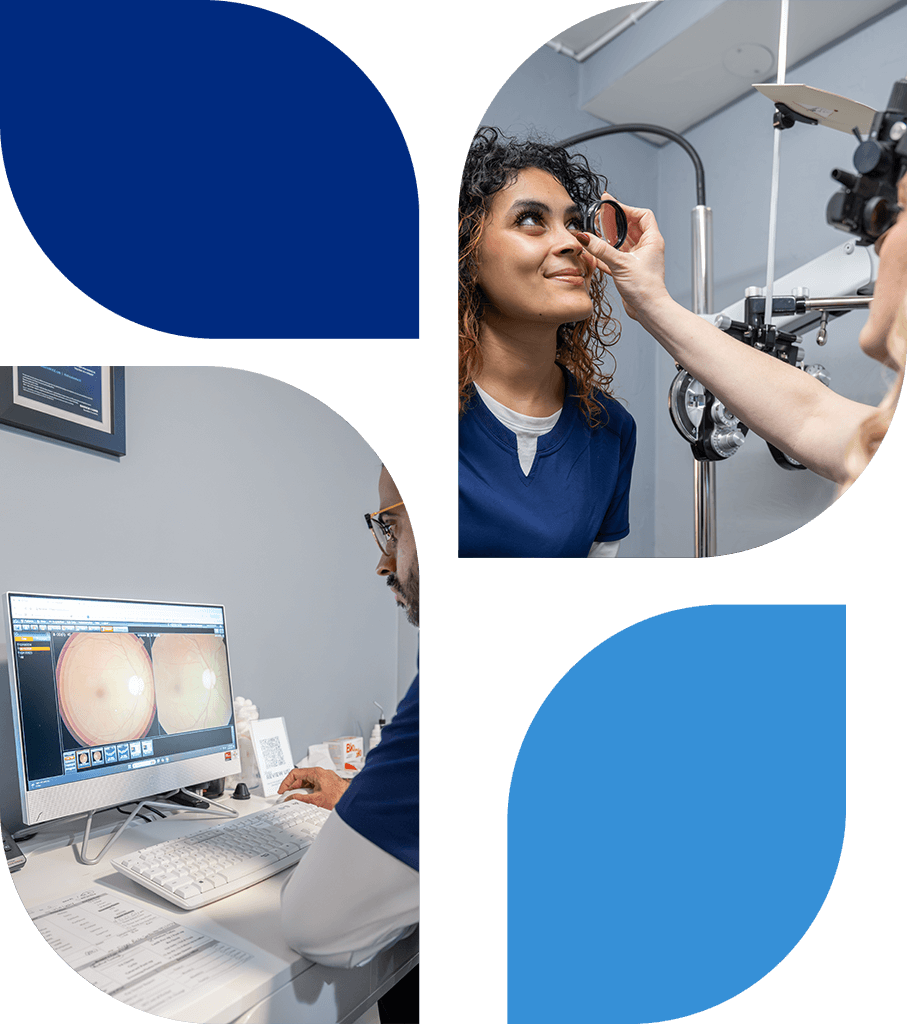Glaucoma Testing and Treatment
Glaucoma is a leading cause of preventable blindness worldwide. Early detection through a glaucoma eye test is essential to preserving vision and preventing irreversible damage. Our offices in Worcester, Randolph, Lincoln, and Cranston offer state-of-the-art glaucoma screening tests and personalized treatment plans tailored to each patient’s needs.
Glaucoma is a group of eye diseases characterized by damage to the optic nerve, often due to increased intraocular pressure (IOP). If left untreated, this progressive condition can lead to peripheral vision loss and eventual blindness.
Types of Glaucoma:
- Primary Open-Angle Glaucoma (POAG): The most common type, progresses gradually without noticeable symptoms.
- Angle-Closure Glaucoma: A sudden increase in eye pressure that requires immediate medical attention.
- Normal-Tension Glaucoma: Optic nerve damage occurs even though eye pressure remains within normal limits.
- Congenital Glaucoma: Present at birth due to structural abnormalities in the eye.
- Secondary Glaucoma: Results from another eye condition or injury.

While anyone can develop glaucoma, certain factors increase the risk:
- Age (over 60 years)
- Family history of glaucoma
- African American, Hispanic, or Asian descent
- Diabetes or high blood pressure
- Prolonged use of steroid medications
- Severe nearsightedness (myopia)
- History of eye injury
Our offices provide comprehensive glaucoma eye exams using advanced diagnostic tools to detect the disease early.
- Glaucoma Pressure Test (Tonometry):
Measures intraocular pressure to identify elevated levels. - Eye Scan for Glaucoma (OCT):
Uses imaging technology to examine the optic nerve and detect early damage. - Visual Field Test:
Detects peripheral vision loss, one of the earliest signs of glaucoma. - Pachymetry:
Measures corneal thickness to assess risk. - Dilated Eye Exam:
Provides a detailed view of the optic nerve for signs of damage.
Early diagnosis is key to preventing vision loss. Treatment options include:
Medications
- Prescription eye drops to lower IOP by reducing fluid production or improving drainage.
Laser Therapy
- Selective Laser Trabeculoplasty (SLT): Improves fluid drainage for open-angle glaucoma.
- Laser Peripheral Iridotomy (LPI): Creates a small opening in the iris to improve fluid flow in angle-closure glaucoma.
Surgical Procedures
- Trabeculectomy: Creates a new drainage pathway for excess fluid.
- Minimally Invasive Glaucoma Surgery (MIGS): Advanced techniques that reduce eye pressure with fewer risks.
- Experienced Specialists: Our glaucoma doctors have extensive expertise in diagnosing and treating various types of glaucoma.
- Cutting-Edge Technology: We use advanced diagnostic tools and treatment methods to ensure accurate results and effective care.
- Personalized Approach: Each patient receives a customized treatment plan tailored to their unique condition and needs.
Glaucoma often develops without noticeable symptoms, earning it the nickname “the sneak thief of sight.” Regular glaucoma screenings are crucial, especially for individuals at higher risk.
Visit our offices in Worcester, Randolph, Lincoln, or Cranston for a thorough glaucoma eye exam and take the first step toward preserving your vision.